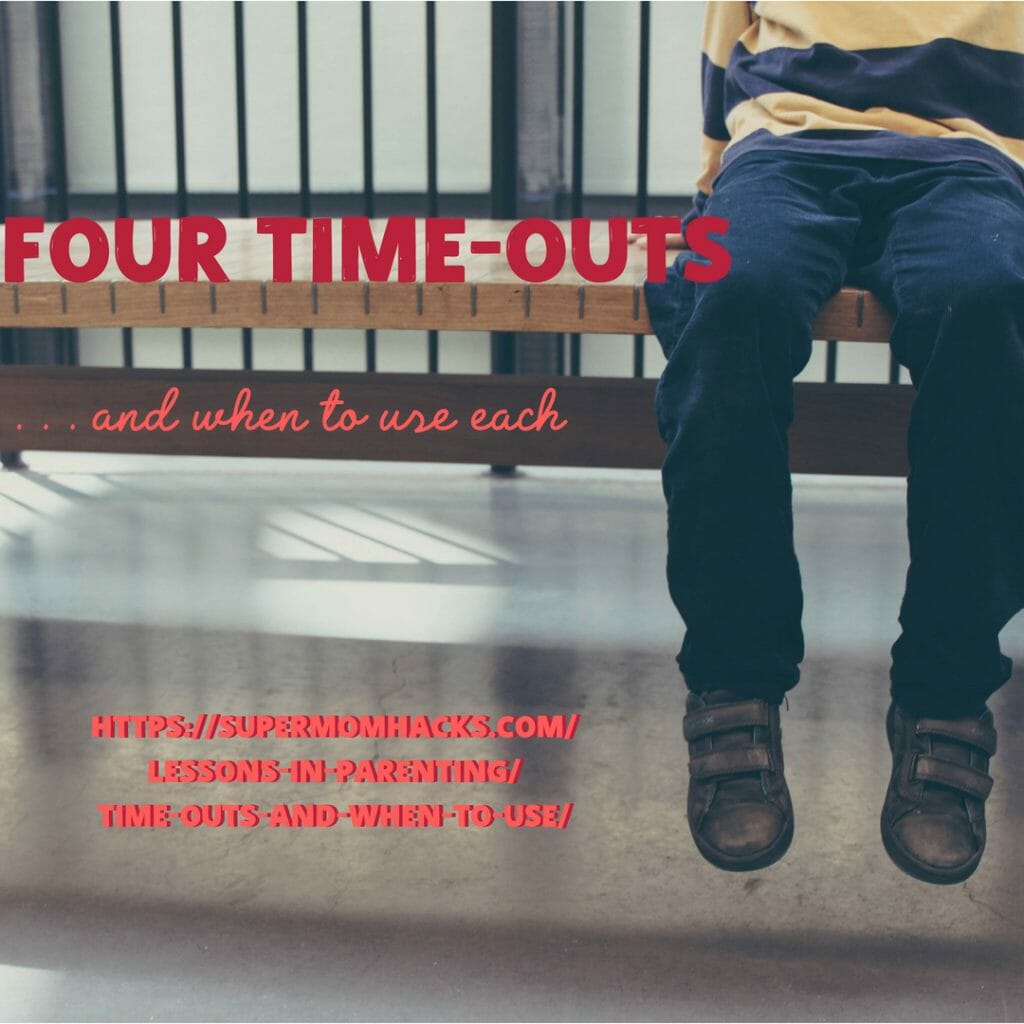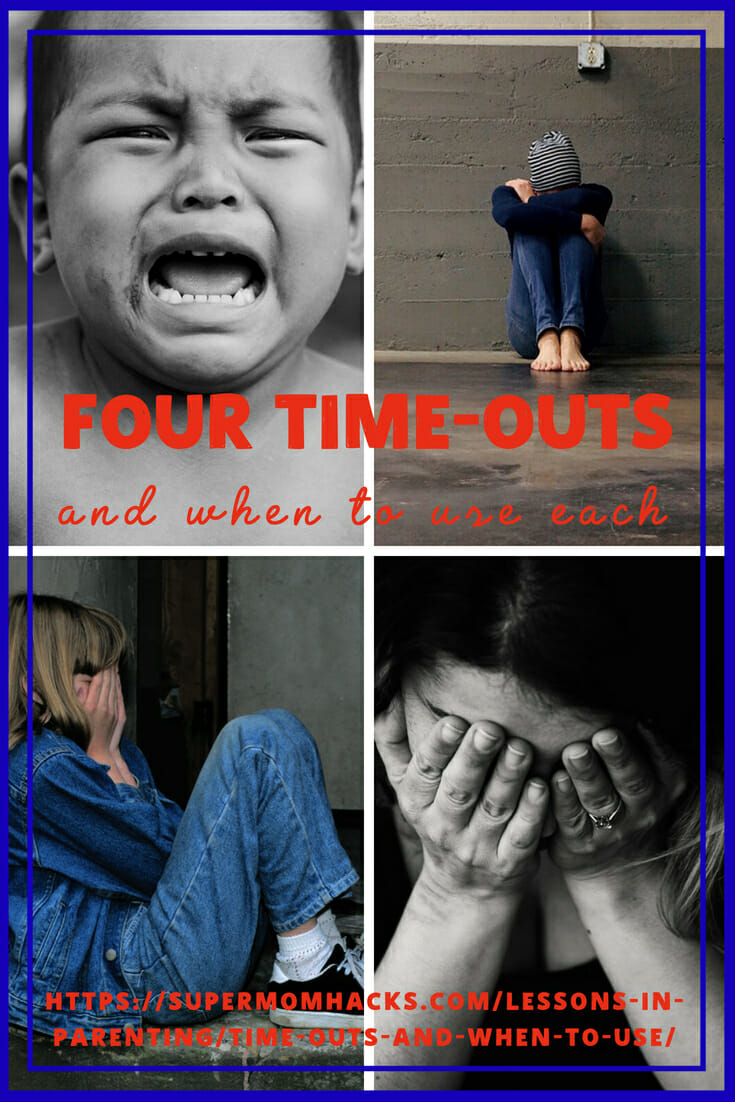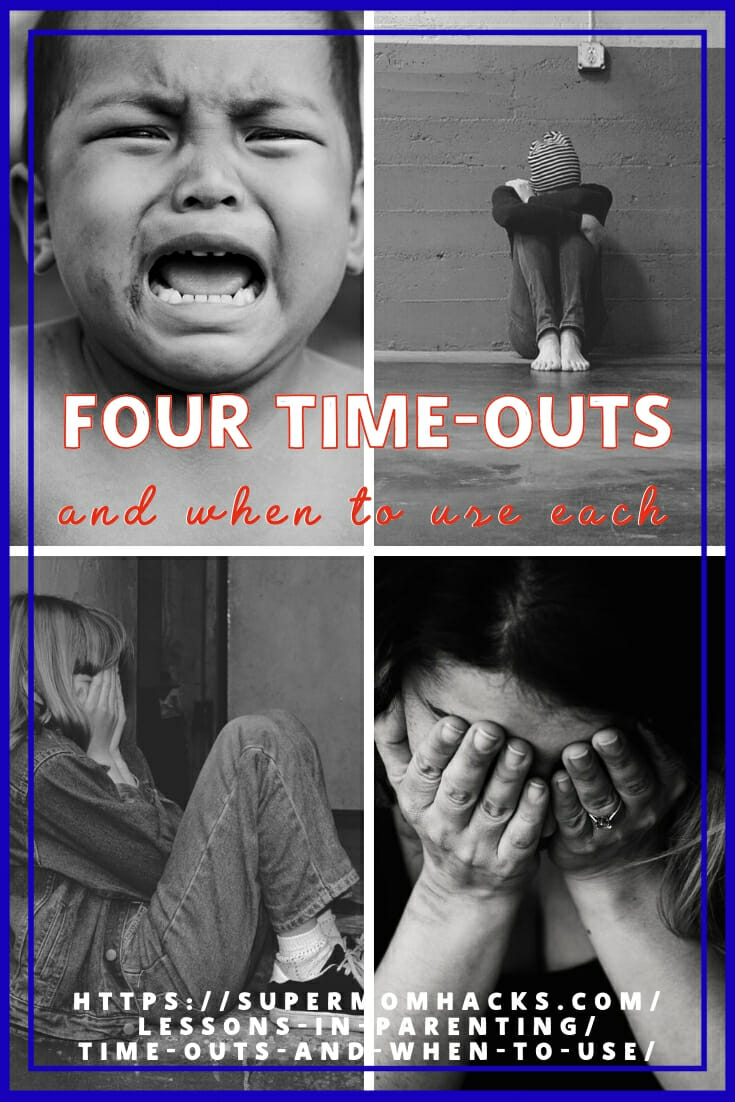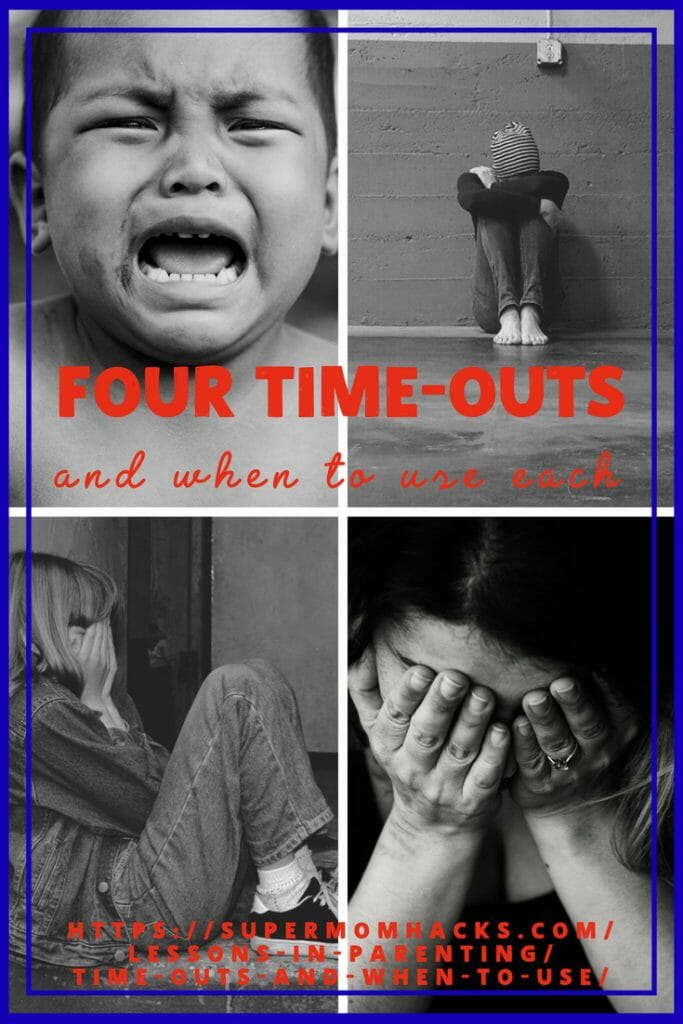ODo you use time-outs with your kids? Are you a veteran of both time-outs AND when to use them?
When Kimmie was two and I was pregnant with Essie, I’d hear other mamas at play dates trading stories on kids being in time-out. It was around this time that I first became aware of blog posts on The Time-Out. I remember thinking, “I’ll NEVER use time-outs on my children! Why would anyone need to?”
 Fortunately, I kept my mouth shut, besides mumbling “oh, we don’t do time-outs” when someone asked me and then changing the subject. Live and learn, Mama. (Kudos to you if your children are older than mine and you’ve NEVER used time-outs.)
Fortunately, I kept my mouth shut, besides mumbling “oh, we don’t do time-outs” when someone asked me and then changing the subject. Live and learn, Mama. (Kudos to you if your children are older than mine and you’ve NEVER used time-outs.)
And luckily for me, the other mamas were kind enough not to laugh at, or attempt to correct, my naïveté.
Fast-forward through the Terrible Threes, and the Terrible Fours, and the Still-Sometimes-Testy Fives. Not to mention the challenges of increasing school demands. And kids who balk at increasing responsibilities as they grow. And the weird dynamic of siblings feeding off each other, as only siblings can.
Right there, you’ve got a recipe for time-outs. But if that’s not enough for you, add in garden-variety sleep deprivation, or kids who can’t sleep, or sleep deprivation of the parental variety. Or if you prefer, throw in a major life stressor or two.
If your family can survive all of these time-out free, without anyone losing their temper, then you should write a guest post for this blog.
SO…for the rest of us mere mortals, here’s my on-the-job training on Time-Outs And When To Use Them. Starting with this:
Did you know there are different kinds of time-outs?
Four Time-Outs And When To Use Each
And now that I understand this, I also realize that time-outs aren’t always a bad thing!
I’m sure any parent with superhuman restraint and perfect children would disagree.
BUT…for anyone who shares even a small sliver of my reality, you need to understand the different kinds of time-outs, so you can use each one correctly. (Using the wrong time-out method is as ineffective as some lucky parents would say ALL time-outs are!)

For all I know, there are more than four kinds of time-outs. (Some might say grounding a teen counts as a type of “time-out.”) BUT, these are the four types I’ve discovered so far:
1. The “Calm-Down” Time-Out
 This is the first kind of time-out I used on my children, starting with the Terrible Threes.
This is the first kind of time-out I used on my children, starting with the Terrible Threes.
What and When:
WHAT: For us, this means sending a child up to her room. Other kinds of “calm-down” time-outs include parent-guided deep breathing, counting, or other relaxation techniques. Yoga also works, if your child likes yoga. (We’ve even gotten to the point where occasionally, when one of the girls is upset about something, she’ll take herself to our basement, pop in a yoga DVD, and work through a session.)
WHEN: Our version of the Calm-Down is ideal for a child who’s throwing a tantrum, or is otherwise so worked up that she can’t remember why. With one caveat: this time-out doesn’t work if you’re on a clock (e.g., you need your kid to get out the door for school).
WHEN NOT TO: As noted above, this is NOT for when you have to get somewhere. If the tantrum is directly related to why you’re running late, ask yourself (later!) why things got to that point. (Do you yourself need to get up a little earlier, and/or finish your coffee before dealing with the kids? Are your kids overtired?)
And if your child is already in ramped-up ballistic mode, it’s too late for the milder versions (deep breathing, yoga, etc.) I mentioned above.
How-To and Why It Works:
When we send our tantruming child to her room, we insist she shut the door. When the girls were younger, this sometimes involved carrying said child up the stairs, and holding the door shut for a bit. We’d then check in at 5 minutes, or 10, or half an hour. The point is to give the kid time to calm down and get to where she’s no longer hysterical. Only then can we discuss why she’s upset and what would help.
Yes, kids, in tantrum mode need love and attention, and aren’t getting their needs met. Ours tend to go from “fine” to “full-blown tantrum” in a matter of seconds. So we learned when the girls were preschoolers that before we could address their needs, they needed a break from everything. (Once they learned to read, chances were good that if we left them alone long enough, they’d eventually distract themselves with a book, which calmed them down pretty quickly.)
Then, and only then, we could talk.
2. The Separation Time-Out
 If the first time-out involves separating the child from the upsetting situation (and/or parent), the second involves separating a child from another child.
If the first time-out involves separating the child from the upsetting situation (and/or parent), the second involves separating a child from another child.
What and When:
WHAT: This time-out involves separating two kids for their own good. Sometimes these are friends who are fighting, or one child harming another. But our family uses the separation time-out when the girls are getting along a little too well. Anyone who’s ever seen their children about to start a food fight, or heard them shrieking with laugher loud enough to wake the dead, knows exactly what I’m talking about.
WHEN: This is a perfect time-out for when you do have something to accomplish (like getting the kids on the school bus), but an appropriate verbal request (e.g. “Please go brush your teeth” or “Inside voices please!”) has not worked. The principle is simple: divide and conquer.
- If the girls are getting too crazy at breakfast, and both are equally at fault, I’ll send one somewhere else to finish her breakfast.
- If the girls are too busy being silly to finish getting ready for school, I’ll send one to brush her teeth while the other gets on shoes, then have them switch. Or one will brush her teeth upstairs while the other one brushes downstairs.
WHEN NOT TO: This doesn’t work if you cannot separate them for some reason – e.g., they’re strapped in the backseat of your moving motor vehicle. (In those cases, I will pull over the car as soon as it’s safe to do so. If necessary, I will turn it off. This gets their attention, and generally succeeds in calming them down pretty quickly.)
Unless there’s an immediate threat of danger, you also can’t use this time-out until you’ve made an appropriate verbal request that they ignore. “Appropriate” means
- parental tone of voice was calm;
- parental tone of voice was polite (“please” and “positive language” – e.g., “Walking feet, please!” not “Don’t run!”); AND
- at least one child was aware of the request. (Eye contact and a gentle shoulder touch go a long way with this.)
Finally, if kids are just engaged in an everyday dispute/non-endangering fight, let them try to sort it out themselves before you intervene. These are important life skills they need to figure out on their own.
How-To and Why It Works:
 In situations where two children are endangering (or about to endanger) each other, separation has obvious and immediate benefits. For kids engaged in lower-grade fighting, you should only intervene if things become dangerous, and/or one goes into a full-blown tantrum.
In situations where two children are endangering (or about to endanger) each other, separation has obvious and immediate benefits. For kids engaged in lower-grade fighting, you should only intervene if things become dangerous, and/or one goes into a full-blown tantrum.
For kids (especially siblings) who are just getting way too silly/crazy/distracted, this time-out is genius. It allows kids to refocus on the task at hand and the world around them. If the bus comes in two minutes but they can’t get their shoes on, removing a sibling-sized distraction can do wonders. Ditto if you’re cooking while a rousing game of Chase-and-Scream Tag whizzes past you and the hot stove every 15 seconds. (Been there, done that.)
If one child gets the hint the first time you separate them, and the other one just gloms back onto the first, then switch the glommer to Time-Out #1.
3. The Attention-Deprivation Time-Out
Warning: this time-out is a last resort, and not for preschoolers and younger.
What and When:
WHAT: This is what most people think of when they hear the words “time out.” The classic version involves seating or standing a child in the corner, facing inward. In our house, the child sits on the third stair in our front hall. This means they’re sitting in a windowless stairwell, facing a closet door.
WHEN TO/WHEN NOT TO: This is the time-out to use when you need to get your child’s attention, or to break a cycle of negative-attention-seeking. It’s also the kind that Anti-Time-Out parents rail against. And with good reason; it’s really not for kids in kindergarten or younger.
But once they’re old enough to regulate their emotions, and they’re capable of doing so, THEN, this time-out may be useful.
Like the first two time-outs, it has to follow an appropriate verbal request. Making sure the child has actually heard and understood you, but is deliberately choosing to ignore you, is essential.
This option may work much better than the first time-out for older children’s tantrums. Our kids have reached the age where if their tantrum is about willful defiance more than anything else, sending them to their room equals rewarding bad behavior: “Oh, goody, instead of setting the table, I get to read!”
Because a chunk of time is involved, it’s also not your go-to when you’re trying to get out the door. In these cases, I find that basic counting out loud drives my kids to the point of doing whatever they need to do, if only so I’ll stop.
How-To and Why It Works:
I started using this time-out only after my psychologist friend Barbara suggested it, as a last resort to handle some stubborn chore-related and negative-attention-seeking difficulties I was having with the girls. We had all lapsed into some bad communication patterns, meaning multiple requests to get things done even when I knew they’d heard me.
I was shocked when my multiple-psych-degrees friend first suggested this to me. It flew against everything I’d ever read about why parents should avoid time-outs at all cost.
I was equally shocked to see how well it works – when used correctly.
I soon got to test it out. Overall, the girls have been great about helping with chores since we started our cleaning power-hour routine. But one Sunday, Child-Of-Mine-Who-Shall-Remain-Unnamed was willfully defiant about doing her share. None of her chores that day were things she couldn’t handle on her own. But whenever I asked her why she wasn’t doing her jobs even as Sister and Mama were knocking ours off, she yelled back that she didn’t want to.
So after three requests (which Barbara would have said was 2+ requests too many), I asked her to sit silently on the stairs for five minutes. She continued to yell back at me. “Ten minutes,” I calmly replied.
Soon she was in full-blown tantrum mode. But besides the fact that rewarding her with reading time seemed unfair while Sister and Mama were working, I couldn’t send Child Of Mine to her room. The other two people still needed to strip the bed, get the dirty sheets out, remake the bed, etc.
 So every time she continued her protest, I added another 5 minutes. By the time she grasped that I was serious, she was up to fifty minutes on the stairs. She spent the first 20 or so crying and howling. After that, she calmed down enough to sit there silently. Sister and Mama periodically walked past in order to complete our chores, but otherwise ignored her.
So every time she continued her protest, I added another 5 minutes. By the time she grasped that I was serious, she was up to fifty minutes on the stairs. She spent the first 20 or so crying and howling. After that, she calmed down enough to sit there silently. Sister and Mama periodically walked past in order to complete our chores, but otherwise ignored her.
The important final piece of this time-out is a debriefing immediately afterward, where you make sure the child can explain to you WHY she landed in Time-Out, and consider what (other, better) choices she’ll make next time to avoid Time-Out. (This is where Parent should clarify anything the child missed because she was too upset. This is also a good time to discuss things like how the child’s behavior affected others, and how she would feel if others behaved similarly toward her.)
After that first test, Child Of Mine’s attitude around home improved noticeably, and she has (mostly) avoided time-out ever since. Sister landed herself in 10 minutes of time-out a few days later, but since then, she’s also been much more cooperative.
4. The Parental Time-Out
 At first I thought this was going to be a post about three time-outs. Then I realized that I was missing the oldest Time-Out of all in our house: the Parental Time-Out.
At first I thought this was going to be a post about three time-outs. Then I realized that I was missing the oldest Time-Out of all in our house: the Parental Time-Out.
What and When:
WHAT: This time-out is just like the others, with one key difference. Instead of a child detaching from the situation/other children, the parent is the one who leaves,
WHEN TO USE IT: Most of the time, you’ll know when you need a break. The trick is making the mental leap to actually taking one. Here are some clues:
- You realize you’re upset at your child
- You’re becoming increasingly frustrated with your child, and it’s affecting your interactions
- You realize your child is pushing your buttons, and succeeding
- You realize you’re upset at something else, but taking it out on your child
- You can’t control your voice so that your requests to your child are “appropriate” (see above)
- You just need to get away – especially if you have a screaming infant and/or toddler within earshot
- Other grownups are within earshot, and you realize you’re yelling at your kid and you suddenly find yourself embarrassed
Your spouse/partner/another grownup may also recognize that you need a parental time-out, and suggest you take one. In our house, this is usually because the girls are stalling on going to bed, the parent on Bedtime Duty has had an especially stressful day, and/or the parent with them is just at the end of Parent’s proverbial rope.
Other things for Second Adult to watch for are a parent who needs more sleep, or is stressed, anxious, or showing signs of depression. Expectant parents who have past episodes of depression/anxiety (or family history) will often get counseling on this at prenatal classes or medical checks. This may include making a plan with their spouse/partner for warning signs and how to handle them.
WHEN NOT TO USE IT: If you’re considering putting yourself in time-out, you need to make sure that the kids are safe first. Confirm that the screaming infant and the tantruming toddler are OK. Separate fighting preschoolers if needed, so they can’t hurt each other. Make sure the baby is safely in a play yard, the toddler is contained in a fully-childproofed room, whatever.
How-To and Why It Works:
There are lots of easy ways that adults in need can take a quick time-out break:
- If a spouse/partner is there, ask them to watch the kids for 5-10 minutes. If you’re the only adult present, call a neighbor.
- Get those earplugs in! Turn down the volume on the baby monitor if needed. (Set a timer if needed, so you remember to turn it back up!)
- Try ten deep breaths, inhaling and exhaling slowly. (Maybe you can get the kids to do them too!) Still stressed? Do 10 more.
- Hide in the bathroom for five minutes. Lock the door if needed.
- If you can do so without getting depressed or losing track of time, do a quick social media check. (But if FOMO/envy will drag you down, skip this one.)
- If you can still hear the child(ren) screaming when you’re wearing earplugs at the opposite end of the house, go outside for a few minutes. (Just don’t accidentally lock yourself out!)
- My personal favorite when the girls were younger: I had a jigsaw puzzle constantly in progress on an adult-height shelf in our basement. When I needed to escape, I’d work on it just long enough to put in one or two pieces. This was enough of a mental reset that I could go back upstairs and face reality again.
- If you keep finding yourself in these situations, consider whether there’s something bigger that you need to address – like a major life stressor or too little sleep. Then try to improve the root cause instead of just the symptoms.
Does your family use time-outs? If not, please share your wisdom and how you’ve avoided them in the comments! If so, is there a kind you use that I haven’t thought of/discovered yet? Let us know that in the comments, too!
If you found this post on timeouts useful, why not share it with others by pinning this image?

NOTE: This site contains affiliate links. I may earn a small commission from any purchases made through affiliate links, at no additional cost to you. For more information, please read the full disclosure/privacy policy.
Follow Super Mom Hacks on Facebook, Instagram, Pinterest, and Twitter!
Or stay in the loop by ✅ joining our mailing list!





Bravo for adding the parental time out because you know we really do need them too. This article is really great. I loved how you broke out the three types and reasons to use them!
This was quite informative. Sometimes we actually need a time out. When things just get too much. Usually, my daughter understands when I tell her something and ask her to do it. But sometimes she just gets on my nerves. I think I need to do that Yoga CD workout more than my daughter (lol) :p
Thank you, I really needed this today!!
You are so welcome!
This is a super helpful article for understanding timeouts and when/how they are helpful. Being a mom is hard! <3
This is a fantastic article. I have a three year old, so I really appreciate these tips! Thanks for sharing 🙂
Time out is about the only thing that works for my strong willed extrovert. She hates being alone so time out gets her attention when nothing else will.
LOL I know exactly what you mean! I definitely have one of those “strong-willed” kiddos, too! 🙂
I was going to say we don’t use time outs, but reading your article made me realize we actually do! I agree that we intervene in all the si4 situations you mentioned (including that of being upset as parents) and we stop, and try to calm things down, but without phisically putting someone in any actual punishment place. It’s more ike a “virtual place” for us.
Ooh, I like your thought about a “virtual place” vs a physical place of time-out! That is cool!
I have and do use all of these timeouts except the attention-deprivation timeout as my two littles are too young for this one. We find they work well for us!
It’s amazing how well the others can work, though, isn’t it? May you be many years off from #3, and maybe even never get there! 🙂
Yes! There are definitely different types of timeouts. I actually have to give myself a version of the adult calm down timeout sometimes.
It totally works! 🙂
My kids are older but I definitely used time out when they were younger. Once they are teens you basically send them to their rooms and take away their electronics.
Yup! 🙂 We’re a little behind the curve on this one, but if our kids had more access to electronics like their friends do, we’d definitely be using this one, too! 🙂
I think time outs are so important for kids to learn to self sooth and problem solve. I remember the first few times it was so difficult following through on time out though.
Absolutely! But you are right, self-soothing/self-regulation is another important aspect of some time-outs!
These are really good! I think I use them inadvertantly. I can be more intentional.
So glad you liked the post, Rachel! And it’s ok that you’ve been using them inadvertently – that’s what we were doing with #1-2-4 for a long time! As long as it’s working to accomplish what you need it to, that’s what matters! 🙂
This is such great information to have. My 3.5 year old is very difficult and we use timeouts but I wasn’t sure if I was doing it correctly.
Haha – not sure this is “correct” by anything but our own experiences, BUT – if it is working for you, then it’s working! (So long as you’re clear on why you’re doing it and what you’re getting out of it! 🙂 )
I simple love your break down of this! Especially three and four. I don’t have kids but as an aunt I like to know what I’m getting into when I’m around kids and everyone has such different ideas about time outs.
Oooooh, yes! Hope this is useful! And if you’re ever babysitting, at least you know about #1 and #2 – #2 can be especially important, whether you call it a “time-out” or not! 🙂
I rarely used time outs with my daughter as I found them ineffective – but as I learnt, what works for one child won’t necessarily work for another… I know a lot of people find it a useful technique.
Wow, no parental time-outs, even? You are one lucky mama!
I don’t have kids yet, but I can definitely understand that every parent needs some time of. It’s very important not to loose yourself!
soooo true! #understatement
This is so helpful, and I wish I’d had this information when my kids were little. Time-outs are a necessary part of parenting!
So glad you liked the post, Lois! As always, I wish I’D realized some of this stuff sooner! A reality-check dose of humility is always good for the soul, no? 🙂
We do time-outs here and they are necessary! I do have a share of my own parental time-outs. It helps my daughter to calm down immensely.
Three cheers for parent time-outs! #soneeded sometimes! 🙂
Yep, mere mortal parent here. Time-outs are very effective for my boys. We do one minute per age, but cut it in half if they are honest with us about whatever the problem was. They sit against a wall in the house, any wall, for their amount of time. As I am typing this my boys were in the other room pushing and screaming at each other so I just sent them both to their rooms for some separation time.
Yay! Am impressed that the wall thing works for you. This is still too tempting-to-interaction for ours, whether they’re facing in or out. I like your “honesty leniency” clause, too! 🙂
This was extremely informative. I don’t have kids of my own, but I can definitely see the value in time-outs. They really don’t have to be a bad thing.
Glad you found it informative! 🙂 #liveandlearn